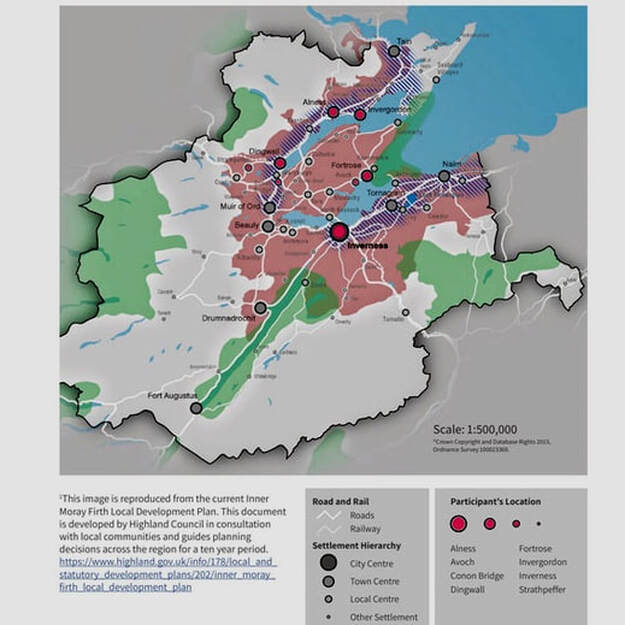Aims:
The Rural Living and Place Making project captures the experiences of diverse rural stayers living in the Inner Moray Firth area of the Scottish Highlands. The project findings illustrate the ways in which diverse rural stayers contribute to rural place making and rural community living. With the focus on increasingly diverse populations in rural areas, the project asks:
1. Why do people stay in rural places?
2. What contributes to or hinders the process of staying?
3. What connects diverse residents to rural places?
4. How do diverse rural residents live with growing cultural, economic and social difference, and what is the role of place in this process?
The Rural Living and Place Making project captures the experiences of diverse rural stayers living in the Inner Moray Firth area of the Scottish Highlands. The project findings illustrate the ways in which diverse rural stayers contribute to rural place making and rural community living. With the focus on increasingly diverse populations in rural areas, the project asks:
1. Why do people stay in rural places?
2. What contributes to or hinders the process of staying?
3. What connects diverse residents to rural places?
4. How do diverse rural residents live with growing cultural, economic and social difference, and what is the role of place in this process?
Methodology and Methods:
Fieldwork for the Rural Living Project was conducted from October 2021 to April 2022 in settlements across the Inner Moray Firth area within the Scottish Highlands as illustrated at image 1.
The data collection included online semi-structured interviews with seven UK nationals and eight EU nationals. The interviews focused on exploring individuals’ experiences and routines in relation to workplace and household, and leisure activities in rural to provide a better understanding of how participants engage in social, economic and political life of the rural place. The rhythm analysis (Lefebvre, 2004) was utilised to map individuals’ experiences and rhythms and routines in a local context to identify daily rituals that have a significant impact on participants’ forms of attachment to, and sense of belonging in the rural places. To provide greater understandings of community rural life and complement data about individuals’ experiences of rural context, the team also interviewed eight service providers and community representatives working in and around the same geographic area.
Based on the interview data, the research team identified the list of rural places that were categories as important for their staying due to their frequency of usage (daily/weekly/monthly/occasionally) and their multiple roles: social gatherings / leisure, private/intimate time with close friends and family and provision of diverse services. The team undertook single side visits to Dingwall, Alness, Fortress, Invergordon and joint site visit in Avoch to capture the landscapes of places identified by the participants as significant for their staying and sense of belonging in rural.
Image 1: Inner Moray Firth area
Fieldwork for the Rural Living Project was conducted from October 2021 to April 2022 in settlements across the Inner Moray Firth area within the Scottish Highlands as illustrated at image 1.
The data collection included online semi-structured interviews with seven UK nationals and eight EU nationals. The interviews focused on exploring individuals’ experiences and routines in relation to workplace and household, and leisure activities in rural to provide a better understanding of how participants engage in social, economic and political life of the rural place. The rhythm analysis (Lefebvre, 2004) was utilised to map individuals’ experiences and rhythms and routines in a local context to identify daily rituals that have a significant impact on participants’ forms of attachment to, and sense of belonging in the rural places. To provide greater understandings of community rural life and complement data about individuals’ experiences of rural context, the team also interviewed eight service providers and community representatives working in and around the same geographic area.
Based on the interview data, the research team identified the list of rural places that were categories as important for their staying due to their frequency of usage (daily/weekly/monthly/occasionally) and their multiple roles: social gatherings / leisure, private/intimate time with close friends and family and provision of diverse services. The team undertook single side visits to Dingwall, Alness, Fortress, Invergordon and joint site visit in Avoch to capture the landscapes of places identified by the participants as significant for their staying and sense of belonging in rural.
Image 1: Inner Moray Firth area
Proudly powered by Weebly
